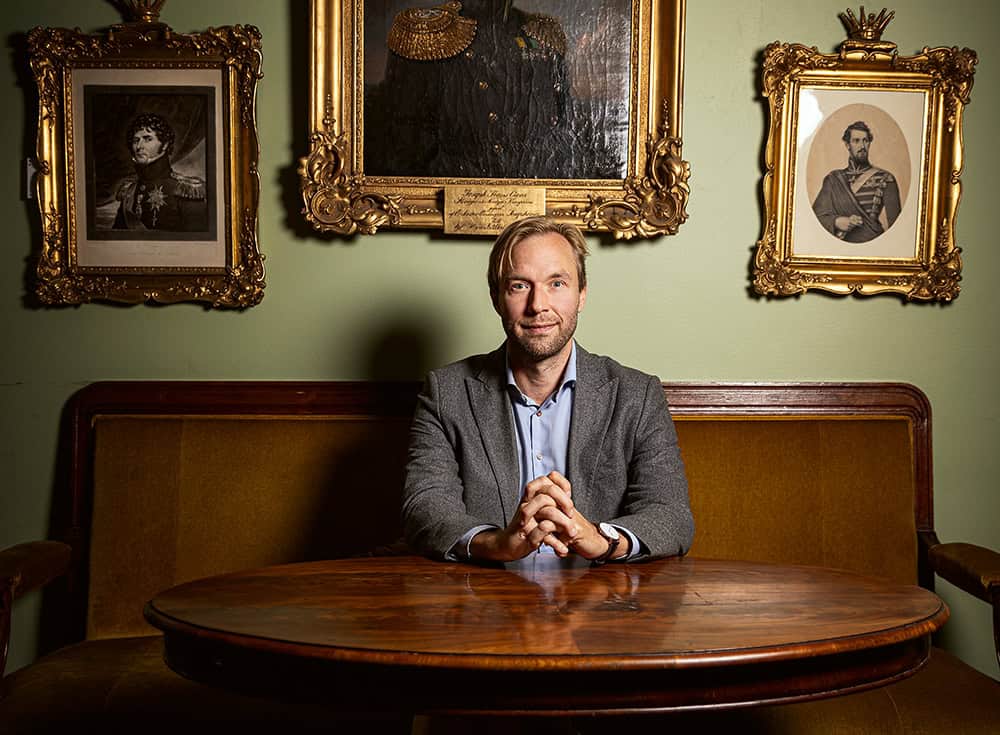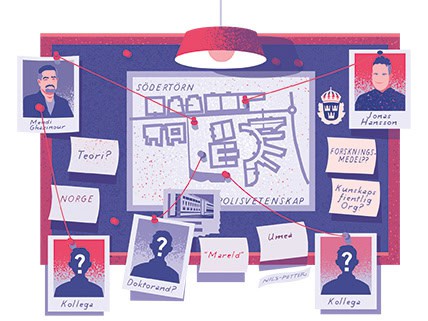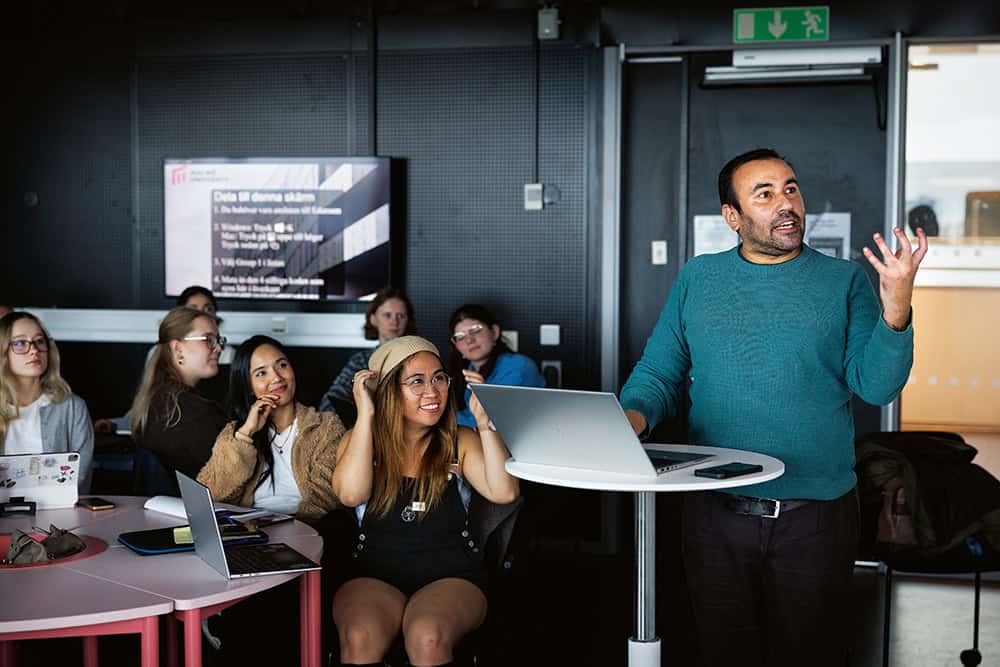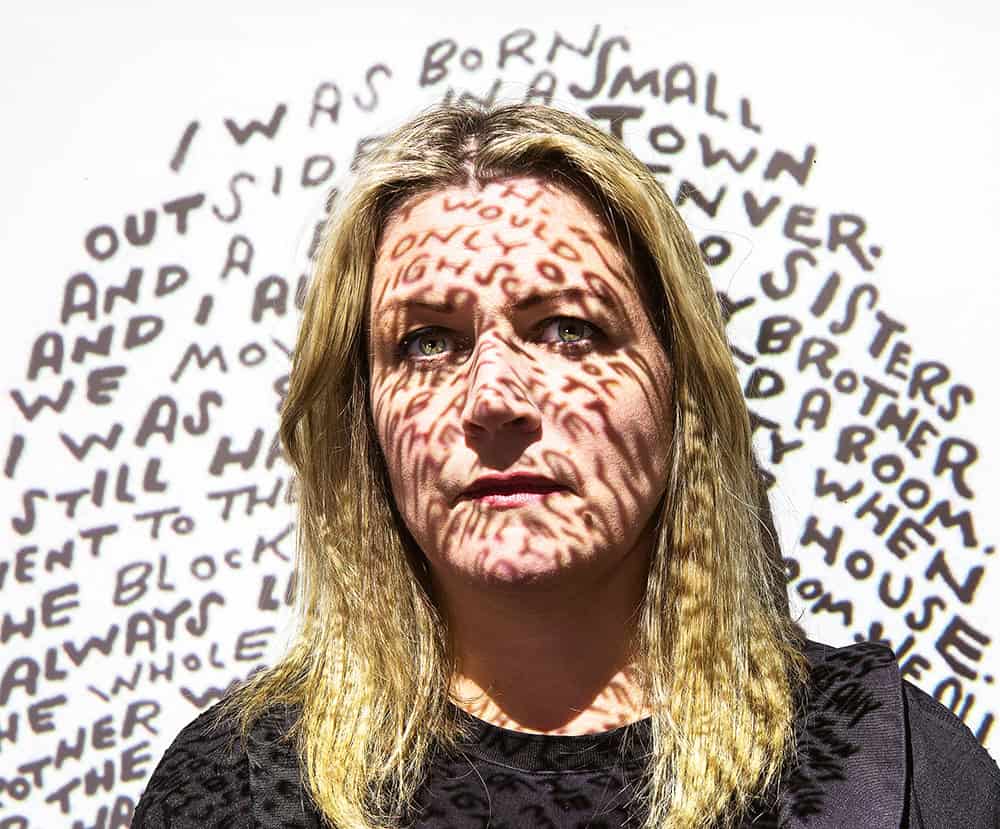One of Per Carlbring’s favourite New Year’s resolutions is the one he made as 2019 changed to 2020. He resolved to talk to a new person every day, to make contact with people outside his own bubble.
“When I started talking to someone, it often turned out fine. I learned something new, discovered we had shared acquaintances or found out where free product samples were being given out. It went well in the beginning, then the pandemic hit,” he says.
Carlbring researches behavioural changes and had received many questions about New Year’s resolutions from journalists over the years. He felt frustrated because he didn’t have much to say, as there was hardly any research. That prompted him to launch the world’s largest study on New Year’s resolutions, with a thousand participants. It showed that the most common resolutions are to start exercising, eat more healthily and reduce stress.
“New Year’s resolutions have an undeserved bad reputation,” he says. “After one year, more than half of the participants had succeeded in keeping them. So they can play a part in important behavioural changes.”
One thing that affected the chances of success was how the resolution was worded. 59 per cent of those who had an approach goal, i.e. something they wanted to start doing, kept their New Year’s resolution, compared with 47 per cent of those who had an avoidance goal, i.e. that they wanted to stop doing something, such as eating sweets.
Why does it have to be at New Year? Can’t we stop eating sweets tomorrow?
“Actually, you could, but there is often some ambivalence before you achieve a change in behaviour. So it makes it easier if you have a certain starting date that is a couple of weeks in the future.”
New Year is also a good time because the whole of society is imbued with fresh start energy, he continues. In research, that is known as the fresh start effect.
“It helps to use a relevant milestone during the year. It might be your birthday or when you start or end your summer holiday. New Year’s Eve has become big thing because it’s the same date for everyone in the western world.”
It is also good to think through why you want to make the resolution. Is it a change you really want to bring about? Or is it something you feel you ought to do?
“Many people fail because they haven’t thought long enough about their resolution and haven’t gone through that ambivalence phase which then leads to an action phase. A lot of people make their New Year’s resolutions at five to twelve, which is too late. It’s better to start thinking sometime in early or mid-December.”
“Anxiety is fun, especially when it comes to phobias, because treatment can change someone’s life in three hours. It makes me feel like a super-scientist.”
Carlbring talks quickly and goes off on tangents in this way and that. A bit like his research, which ranges from anxiety and phobias to New Year’s resolutions, psychedelic substances, gambling addiction and April Fool’s pranks. Sprawling and unstructured, some might think, but Carlbring’s primary motivator is that what he does feels is enjoyable. Fun is the word that comes up most often during our interview.
“Anxiety is fun, especially when it comes to phobias, because treatment can change someone’s life in three hours. It makes me feel like a super-scientist.”
It is also easy to get people to participate in such studies, because people with phobias, anxiety and panic syndrome are eager to be cured of their problems.
“Anxiety is an extremely unpleasant feeling. You can’t just sit there with your anxiety. You have a huge incentive to try to get rid of it.”
On one wall of his office is a portrait of a bushy dog painted in the colours of the rainbow. It resembles his own golden retriever, Ludde, who can often be seen around the university. He is part of a study called Lucid Universal Digital Dog Exposure, which forms the abbreviation LUDDE, which is looking at whether using virtual reality, VR, is as effective as using a real dog in the treatment of phobias about dogs.
“We also test different types of VR treatment, and the idea is that people who are afraid of Ludde before the treatment and will not be afraid afterwards.”
“We also test different types of VR treatment, and the idea is that people who are afraid of Ludde before the treatment and will not be afraid afterwards.”
Carlbring and Ludde have been trained together as a licensed therapy dog team. Ludde comes to the university approximately once a fortnight and has been involved in around 30 treatments.
“It feels like the first Avatar film, where you have to be like a team with your animal. When it works at its very best, we are single unit rather than two individuals.”
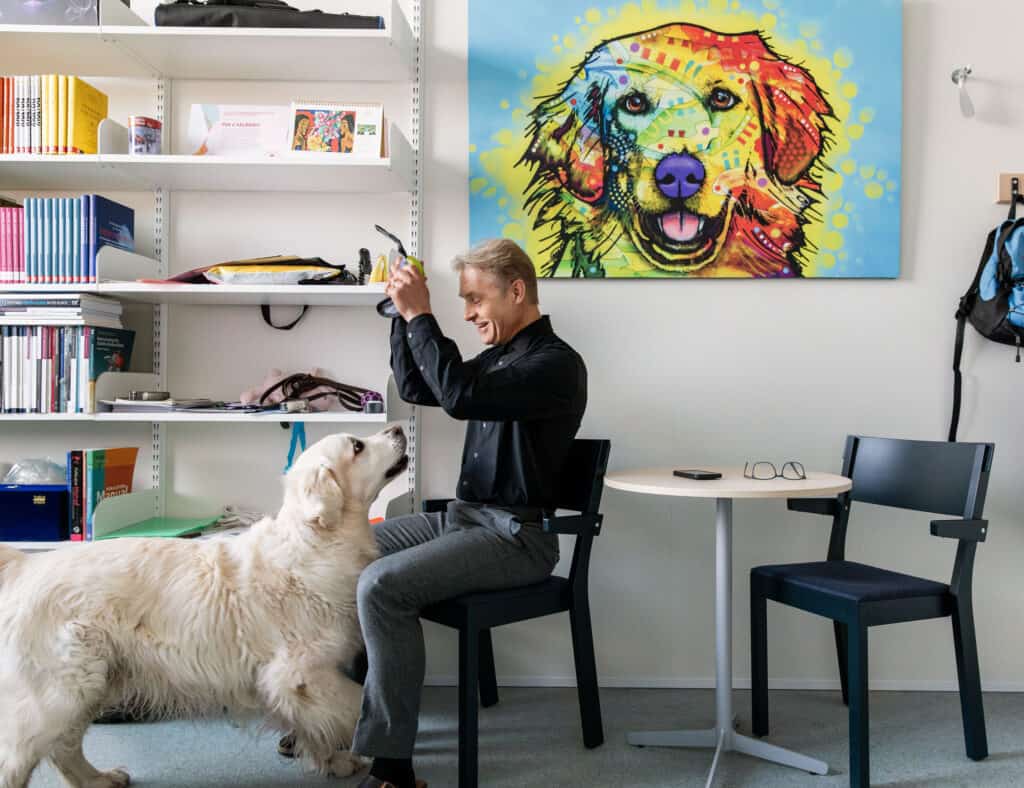
Ludde is also used on a course in the psychology programme on exposure therapy, which is when people are exposed to what they are afraid of in small incremental steps. At the beginning of the treatment, he lies passively in a corner while the patient and Carlbring sit at a safe distance and talk about him. Then the contact with Ludde is increased gradually.
“It’s the most effective known treatment and was invented by my predecessor, Lars-Göran Öst, a professor emeritus in clinical psychology, who discovered that a single session of up to three hours is often enough. Approximately 90 per cent of sufferers get over their dog phobia with such treatment.”
It is not common for psychologists to demonstrate what they do, he continues, and it is a challenge to treat people in front of an entire class. But he usually consoles himself with the thought that no matter what happens, if he makes a mistake and perhaps takes a step that is too small or too big, it will stimulate good discussion with the students.
“We’re not using artificial textbook examples. It’s important to behave with sensitivity in exposure treatment. There’s no ready-made next step because all patients are afraid in different ways.”
Per Carlbring is a 51-year-old psychologist, psychotherapist, specialist in clinical psychology and professor of psychology at Stockholm University. He is the co-author of several books, including Tio i tolv – en bok om att lyckas med nyårslöften, mål och beteendeförändringar (Ten to Twelve – How to Succeed with New Year’s Resolutions, Goals and Behavioural Changes – Natur & Kultur 2018) and Social fobi – social ångest: effektiv hjälp med KBT (Social Phobia – Social Anxiety: Effective Help Through CBT – Liber 2019).
In his spare time, Per Carlbring enjoys running with his dog Ludde and watching videos about new technology. For twelve years he was editor-in-chief of the scientific journal Cognitive Behaviour Therapy.
Per Carling has also benefited himself from his experience of treating phobias. Like after he had been diving near the island of Key Largo in Florida while on holiday. A shipwreck lay in the blue-green water, its hull covered with coral and algae. What were once doors and windows gaped like black holes. He watched several of the party dive confidently into the wreckage, with small clouds of bubbles rising from their mouths and metal oxygen tanks on their backs. He wanted to go in, but he didn’t dare. Confined spaces made him very uncomfortable when scuba diving, perhaps even afraid.
“That experience was an eye-opener and woke a strong desire within me to control my fear.”
So he decided to take a diving course in the Stockholm archipelago. It became a form of exposure therapy, where step by step he dived into increasingly confined spaces – but always within the safety limits.
“Diving in confined spaces involves real risks and requires great caution. This understanding of the function of fear – that it is to some extent a protective mechanism – was central to my way of dealing with the situation.”
He also used cognitive restructuring to manage and reevaluate his thoughts. That is, distinguishing between rational caution and disproportionate fear using disaster scenarios, which is a key component of managing phobias.
“That experience taught me a lot about how to apply theoretical methods in practice, while recognising that some fear can be a healthy and realistic reaction to real danger. It was a humbling experience that gave me a deeper understanding of my patients.”
Carlbring did not actually plan to become a psychology researcher, but a doctor. He went to the United States to study medicine, but he needed one more course to get a study grant and he chose psychology. He was fascinated by the teacher’s stories about socio-psychological experiments.
“I dropped everything else and just wanted to study psychology,” he says.
The best way to study a lot of psychology was to take the psychology programme at home in Sweden. He then went straight on to doctoral studies and a thesis on the treatment of panic syndrome. Later, he trained as a psychotherapist and as a specialist in clinical psychology. “I think it’s fun to collect titles,” he smiles.
Why?
“That’s a difficult question. I’ve not asked myself that. It’s fun to see my CV grow while I learn new things. It not only feels good, but it gives me some kind of objective proof that I’ve succeeded.”
Does it feel more real??
“Yes, exactly. But it could also be a matter of self-esteem. If I had huge self-esteem, I wouldn’t even need to look at that kind of thing.”

Per Carlbring has been interested in new technology since childhood, and today he likes to incorporate it into his research. He researches psychological treatments conducted over internet and VR technology in the treatment of phobias. VR makes it possible to tailor treatment to each client, he says. At the same time, it also makes it easier to standardise treatments so that all participants in a study receive exactly the same therapy.
“The idea is not to replace therapists with VR, but to make therapists more efficient by giving them better tools.”
He has done a lot of research on social phobia, a strong fear of being critically scrutinised by other people and a feeling that other people do not perceive you positively. He has used VR in the treatment of phobias about speaking, for example, the fear of speaking in front of other people, which approximately 80 per cent of all people with a social phobia suffer from.
The treatment starts with a three-hour session where the participant and the therapist meet in person. They talk about why the person thinks it’s scary to speak in front of people. The participant is given a short speaking exercise of about a minute, which they do while wearing a VR headset and holding controllers in their hands. In the beginning, the exercise is simple, for example counting down from 60 to zero. Their voice is recorded and the hand controllers register their movements.
“The therapist can set how big the audience is and how interested it looks and seems.”
The participant then talks to their therapist about how they felt, what thoughts came up and how they may have been perceived by the audience. The person then puts the VR headset back on. This time, they sit in the audience instead and get to see a digital version of themself doing the exercise.
“Then the participant talks to the therapist about how they thought they were when they spoke. In that way, they get more of an observer’s perspective and don’t just have their own internal view.”
When treating arachnophobia, fear of spiders, VR also has benefits, says Carlbring. Real spiders can be difficult to get hold of. Once he even posted an ad online for spiders, which got a great response. Lots of people wanted him to come and collect their spiders. A sewage treatment plant also got in touch. “The spiders there had no natural enemies. There were webs like bedsheets. I could collect as many as I wanted. It was heaven for me, but not for someone who has a spider phobia.”
In one of his studies, participants with arachnophobia were randomly allocated to either traditional exposure treatment with real spiders or VR treatment. The VR treatment was designed as a game that involved helping a spider in various ways. It could be lifting a glass that the spider was under so that it could get out or holding up an umbrella for a spider climbing up a wall in the rain. The VR spiders proved to be as effective as exposure using real spiders.
“That was surprising, especially since the VR participants only had a visual impression of the spider. For example, they couldn’t feel how it moved on their hands.”
As for New Year’s resolutions, the latest study, New Start 2024, is underway. Per Carlbring and his colleagues are looking for 2,000 participants in order to investigate four techniques for success with New Year’s resolutions. Among other things, they will test the SMART method, which states that goals must be specific, measurable, achievable, realistic and time bound.
“All the magazines and journals tell you that’s what you should do, but we found indications in the first study that it might not be such a good idea. It may make it too clear that you have failed. For example, some people had the goal of losing ten kilos before a specific special event. If you’ve lost nine kilos, you’ve not succeeded according to that model, even though you’ve made great progress. So the danger is that it demoralises you.”
How to succeed with your New Year’s resolution
• Many people make their resolutions at five to twelve, which is too late. Instead, start thinking about it a few weeks before New Year’s Eve.
• Let the resolution grow and develop. Think through your goal. Is it something you really want or something you feel you should do? It is important that it is a goal that is attractive to you.
• Formulate an approach goal – something you want to do – rather than an avoidance goal – something you want to stop doing.
• Involve another person. It could be a person with the same resolution and that you help and support each other or someone who helps you by checking how things are going.









